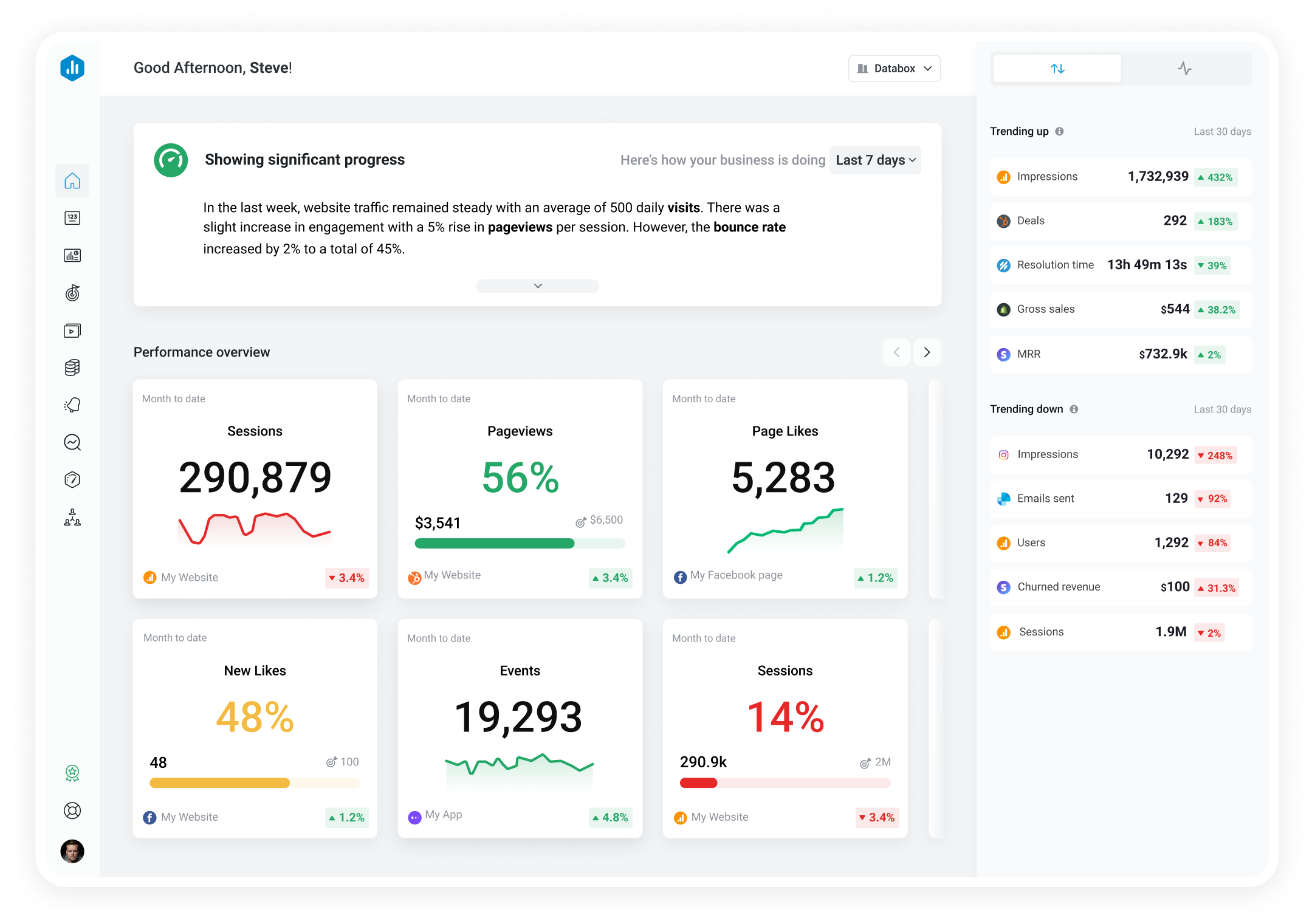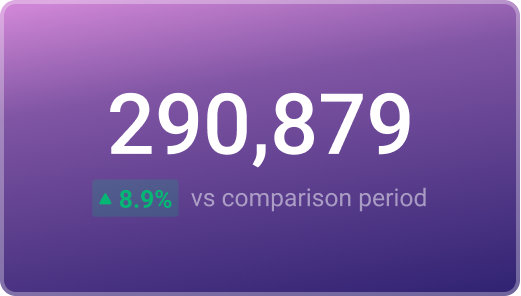Track all of your key business metrics from one screen
GET STARTED
 QuickBooks
Gross Profit Margin (Accrual)
QuickBooks
Gross Profit Margin (Accrual) Gross Profit Margin (Accrual) is a metric that shows the amount of revenue left over after deducting the direct cost of goods sold, and it's calculated by dividing the gross profit by total revenue.
With Databox you can track all your metrics from various data sources in one place.

Used to show a simple Metric or to draw attention to one key number.
Databox is a business analytics software that allows you to track and visualize your most important metrics from any data source in one centralized platform.
To track Gross Profit Margin (Accrual) using Databox, follow these steps:
 Goals
Goals Scorecards
Scorecards Metric Digest
Metric Digest Metric Builder
Metric Builder Data Calculations
Data Calculations Performance Screen
Performance Screen